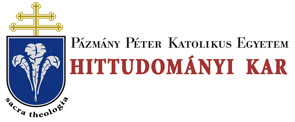Folia Theologica 21. (2010)
Barbour Hugh O.Praem.: The Cosmology of Catholic Communications: Postmodern Kerygma? A Reflection by a Disciple of SS. Albert the Great and Thomas Aquinas
FOLIA THEOLOGICA 21 (2010) 149 Hugh Barbour, O.Praem. THE COSMOLOGY OF CATHOLIC COMMUNICATIONS: POSTMODERN KERYGMA?* A REFLECTION BY A DISCIPLE OF SS. ALBERT THE GREAT AND THOMAS AQUINAS In 1964 the Cambridge educated Canadian Marshall Me Luhan published Understanding the Media: the Extensions of Man and in so doing he became the founder of the science of Communications Media. To him we owe the famous dictum "the medium is the message," which is the title of a later work, as well as the division of the various media into "hot" and "cold" media. (You will be happy to know, by the way, that the academic lecture is for McLuhan a "hot" medium, that is one which requires close attention to a product presented to one sense principally, and proceeds methodically and rationally by sequential steps.) McLuhan was a convert to the Catholic faith. Although his extensive and universally influential works in his new field did not bear directly on themes of faith, and he was and is immensely respected in the mainstream (he was a friend of Woody Allen, and even appeared in one of his movies), nonetheless, his biographer assures us that he was convinced that he was given his greater insights into the nature of media communications by the the Mother of God. His colleagues spoke of his intellectual bond with the Blessed Virgin. One of them said "He had a direct connection with the Blessed Virgin Mary (...) He alluded to it very briefly once almost in a please-don't-laugh-at-me tone (...) It was clear from what he said that one of the reasons he was so sure about certain things was because the Blessed Virgin had certified his understanding of them."* 1 It is to such a * This paper was presented at the Information Technology Faculty of the Pázmány Péter Catholic University (Budapest, 14th October 2009). 1 Marchand, Ph., The Medium and the Messenger, MIT Press, 1998. 51.
